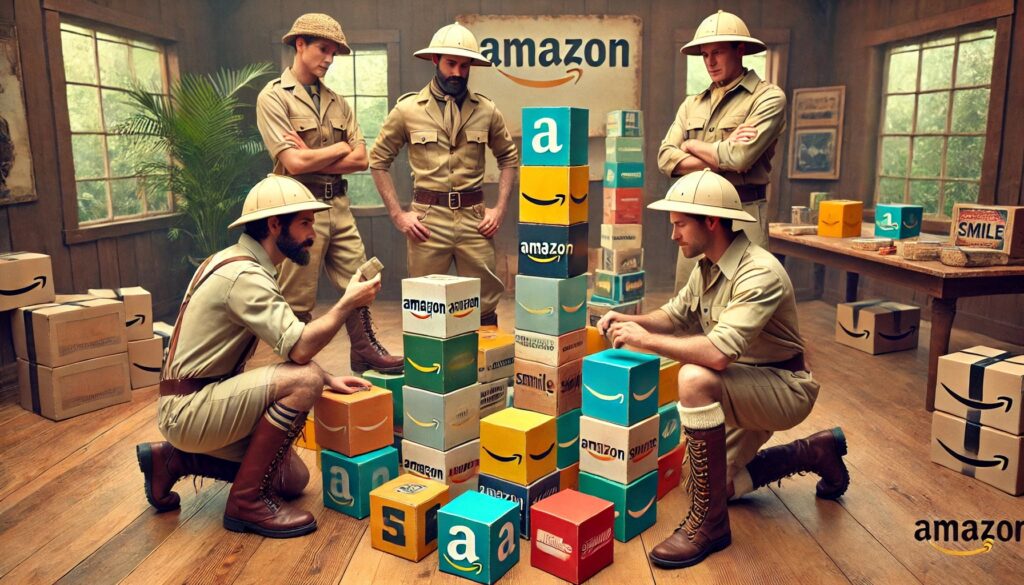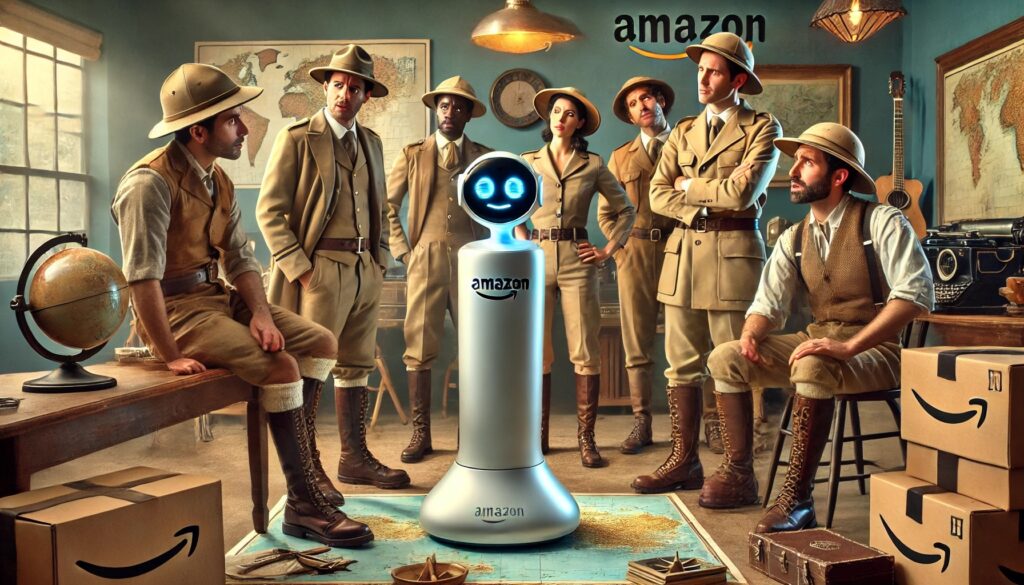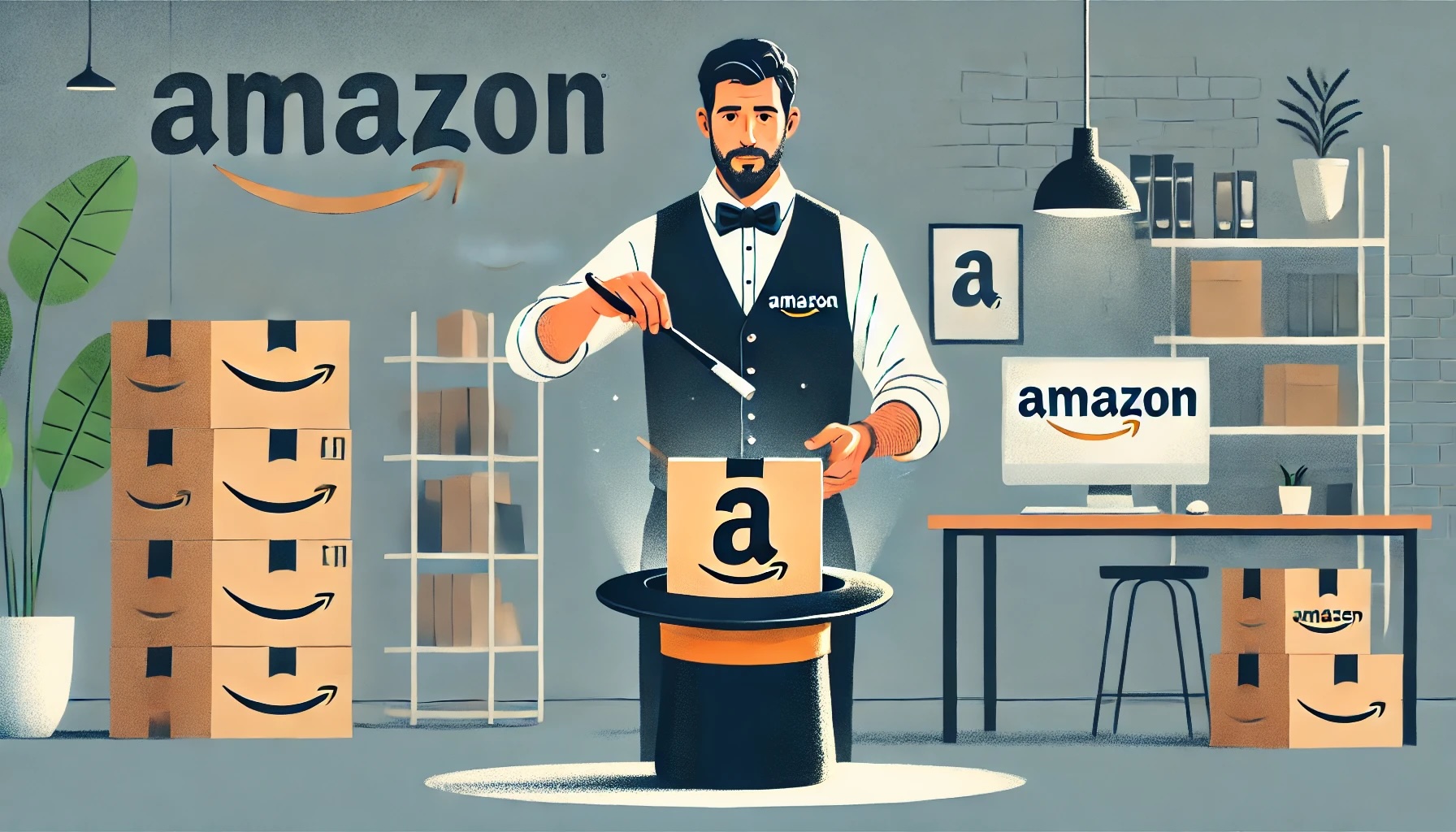Unlock the Amazon Algorithm: Use These 20 Tips to Set Your Brand Apart
Find out how top Amazon sellers are using these strategies to dominate the Buy Box and boost their sales in today’s ultra-competitive market

Amazon ad experts might agree that the most important Amazon ad strategy is to optimize your keyword targeting. This involves using a combination of broad, phrase, and exact match keywords to ensure your products reach a wide audience while also focusing on high-intent shoppers.
For entrepreneurs that are a little more adventurous and willing to go further with their Amazon advertising journey, these 20 tips will help you to STAND OUT and get the most value out of your campaigns.
Want to unlock Amazon’s closely guarded algorithm? Keep reading to find out how!
1. Prioritize high-performing ASINs
Prioritize high-performing ASINs by focusing your ad spend on the top 20% of products that generate 80% of revenue. This ensures your advertising dollars target products with proven demand and high conversion rates. That in turn will maximize returns and reduce wasted budget on underperforming items.
Break down ad spend by ASIN to identify underutilized products and redirect spending toward those with untapped potential, increasing overall campaign effectiveness.
2. Implement organic ranking campaigns
Boost visibility for products with good conversion rates. By investing in ad campaigns that target products with strong conversion rates, you’re helping elevate their organic search ranking on Amazon.
This approach not only drives immediate sales through paid ads but also improves organic traffic over time. When products are already performing well, increasing their exposure through paid search can cement their presence in top search positions, ensuring sustainable visibility without needing continuous ad spend.
Ready to Start Growing Your Amazon Brand?
Canopy’s Partners Achieve an Average 84% Profit Increase!
Find out more3. Conduct regular search term isolation reviews
Regularly review search term reports to identify and isolate high-converting search terms from broad or automatic campaigns then use them in your manual exact match campaigns. This helps ensure your ad spend is focused on the most effective keywords, improving conversion rates while reducing wasted ad spend on non-performing terms.
4. Analyze match type performance
Different keyword match types—exact, phrase, and broad—perform differently depending on your goals. Analyzing the performance of each match type to understand where you’re getting the most value.
For example, exact match keywords tend to result in higher conversion rates, while broad match can drive more impressions while at the same time requiring more budget filtering. Focusing on the best-performing match types to allocate your budget more effectively.
5. Adopt a net profit per session model
Instead of purely focusing on revenue or ACoS, the net profit per session model emphasizes profitability on a per-session basis. By tracking the actual profit generated per visitor session, you can better understand the true value of each ad dollar spent.
This approach is particularly valuable when sales plateau, as it helps refine strategies to maximize profit margins rather than just increasing sales volume.
6. Utilize cross ad type checks
It’s important to balance spend between Sponsored Products and Sponsored Brands.
Cross-ad type checks involve comparing the performance of Sponsored Products and Sponsored Brands campaigns. Sponsored Products often drive direct sales, while Sponsored Brands are useful for increasing brand awareness.
By monitoring and balancing your ad spend across both types, you can ensure you’re not overspending on one format at the expense of the other, optimizing for both immediate sales and long-term brand growth.
7. Segment ad spend
Breaking down your Amazon ad campaigns by performance allows you to isolate high-ACoS campaigns and implement strategies to improve them. By segmenting ad spend based on performance, you can test different keywords, match types, and bidding strategies to reduce ACoS while maintaining sales volume.
This strategy makes it more likely that ad budgets are used efficiently, focusing on improving profitability without sacrificing visibility.

8. Adjust campaign structure
To better manage large numbers of keywords, it’s necessary to have a well-organized campaign structure. Grouping similar keywords into tightly related ad groups ensures more accurate targeting, which can result in better ad performance. Additionally, it allows for more granular bidding strategies and easier optimization, as you can quickly identify high-performing keywords and adjust bids accordingly.
9. Implement waterfall campaigns
Waterfall campaigns are an efficient way to manage large product catalogs by segmenting campaigns based on product performance tiers. High-performing products are placed in top-tier campaigns with higher bids, while lower-performing or new products are placed in lower-tier campaigns with smaller budgets.
This strategy allows you to focus your resources on the products that generate the most revenue while still testing and optimizing underperforming listings. It’s also useful for scaling your ad spend without a heavy investment upfront.
Who doesn’t love that idea?
10. Optimize budgets
Sales velocity is crucial to the success of an Amazon advertising strategy. Ensuring your best-performing campaigns have sufficient budget helps you to maintain momentum. If a top campaign runs out of funds, you risk missing out on profitable sales. Regularly monitoring campaign budgets and adjusting as necessary prevents this, ensuring continuous visibility for your highest-converting products and avoiding disruptions in ad performance.

11. Leverage Amazon’s AI-powered Image Generator
Amazon’s AI-powered Image Generator can help sellers create lifestyle images that resonate with their target audience. High-quality, visually engaging images are crucial for capturing shoppers’ attention, particularly in a competitive marketplace. Leveraging this tool helps enhance product listings with attractive visuals that align with consumer preferences, boosting click-through rates and conversions.
12. Regularly update keywords
Consumer behavior and search trends change frequently, making it essential to update your keywords regularly. By continually researching and adding new, relevant keywords to your campaigns, you can stay competitive in search results and maintain visibility.
Regular keyword updates help ensure your ads are shown to the right audience at the right time, maximizing relevance and sales potential.
13. Use product targeting campaigns
Product targeting allows you to place your ads on competitor product detail pages, especially those with lower ratings. This can entice customers to choose your product instead. By carefully selecting competitor listings with weaknesses such as poor reviews or higher prices, you can position your product as a better alternative, potentially driving additional sales at their expense.
14. Incorporate seasonal keywords
Seasonal keywords are critical for capturing holiday or event-driven traffic. By incorporating these keywords into your PPC campaigns and product listings, you can align your product offerings with current consumer demand. This strategy ensures your products stay relevant during peak shopping periods, resulting in higher visibility and conversions when shoppers are most active.
15. Implement a coupon strategy
Coupons are a powerful tool for improving click-through rates (CTR) and conversion rates. Highlighting a product discount with a coupon in your ads attracts price-conscious shoppers, increasing the likelihood they will click on your ad and complete a purchase. Coupons can also give you a competitive edge, making your listing stand out among similar products.
Ready to Start Growing Your Amazon Brand?
Canopy’s Partners Achieve an Average 84% Profit Increase!
Find out more16. Utilize Amazon Posts
Amazon Posts is a free tool that allows brands to share content, such as images and lifestyle shots, directly on Amazon. This can help drive organic traffic to your product listings while boosting visibility. Regularly posting engaging content creates a stream of free exposure that complements paid advertising, ultimately enhancing brand awareness and product discoverability.
17. Leverage Amazon Influencers
Amazon Influencers can significantly increase your product’s exposure by driving external traffic to your listings. Influencers typically have loyal followings on social media platforms, and their endorsements can result in direct traffic spikes. By partnering with influencers, you can attract new customers, build credibility, and generate buzz around your products outside of Amazon’s ecosystem.
18. Optimize (and reoptimize) product listings
Driving ad traffic to listings that aren’t fully optimized is a common mistake. Before investing in ads, ensure that your product listings are complete with clear descriptions, high-quality images, and compelling copy. Well-optimized listings convert at a higher rate, meaning your ad dollars are more likely to result in sales, maximizing your return on investment.
Remember, your Amazon listings aren’t a set-it-and-forget-it affair. Keep updating yout listings to set yourself – and your brand – apart!

19. Create video ads for Sponsored Brands
Video ads for Sponsored Brands can capture attention in ways that static images simply cannot. Video content stands out in search results, providing an engaging way to communicate your product’s value. Well-crafted video ads can convey more information in less time, leading to higher click-through and conversion rates, especially in competitive niches.
20. Implement audience targeting and ad tracking through Amazon DSP for broader reach
By utilizing audience targeting, you can create more precise and tailored campaigns based on factors such as shopping behavior, demographics, and interest categories. Additionally, Amazon DSP’s ad tracking capabilities offer insights into performance across different channels, helping you refine your strategies and optimize ad spend for greater ROI.
How Canopy Management Can Help
What would adding 67% more organic sales mean for your brand?
Turns out that when you combine the massive experience of Canopy’s Amazon Advertising Experts with smart tools and tech, you get industry-leading results like this:
- 84% Average Year-Over-Year Profit Growth for Our Partners
- 2.7 Billion in Revenue Managed
- 99.1% Partner Retention Rate
Canopy Management is a full-service marketing agency for Amazon and Walmart sellers. Our team consists of former Amazonians, multi-million dollar sellers, and award-winning experts.
When you consider the many ways that Canopy Management can help you grow your business, you’ll see why selling on Amazon is much easier “under the Canopy.”
- Strategic Growth Planning
- Listing Copywriting Optimization
- Listing Photography
- Product Videography
- Advertising Management
- Customer Service
- Demand Side Platform (Amazon DSP)
- Amazon Posts
- Full Service Management
- Amazon Review Aggregation
Ready to Start Growing Your Amazon Brand?
Canopy’s Partners Achieve an Average 84% Profit Increase!
Find out more

